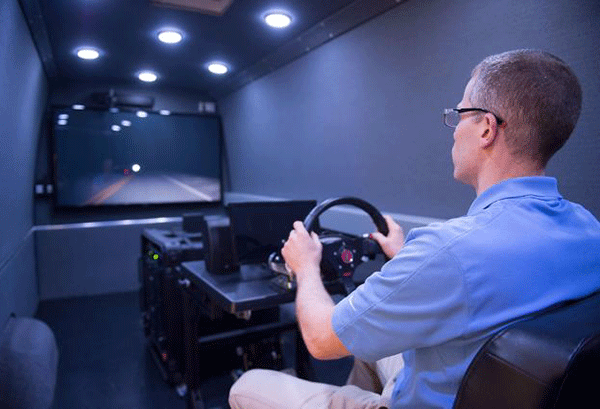
The University of Iowa is reporting that a new eye lens developed to replace native ones in cataract patients is to be trialed for its novel ability of reducing the halo effect common in current implantable lenses. We’ve written about similar technology, but can’t confirm the same team is behind it. Though the lenses are interesting in themselves, what is unusual is that they will be undergoing a clinical trial whereby patients following surgery will be using a driving simulator that mimics the glare produced by the headlights of passing cars at dusk and night.
The MiniSim developed at the National Advanced Driving Simulator at the University of Iowa is a slimmed down version of the full-scale system, designed to assess only specific aspects of driving ability. The patients will be driving down poorly lit roads and encountering objects on the ground while oncoming cars pass by. The goal is to see whether the new lenses will allow the patients with the new lenses to avoid more obstacles than the control group fitted with traditional implants, thereby proving that the new lens technology works to improve vision at night, and that driving simulators are a good resource for performing these kinds of studies.
Flashback: Eye Lenses Designed With Significantly Reduced Halo Effect…
Info page: MiniSim Driving Simulator…
Source: University of Iowa…
The post Driving Simulator to be Used to Assess Lenses for Cataract Surgery appeared first on Medgadget.
